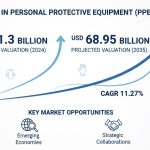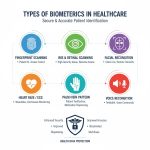The Breast Pump Market: A Comprehensive Analysis of Growth, Innovation, and Global Trends
The breast pump market stands at a fascinating intersection of healthcare innovation, changing societal dynamics, and evolving maternal needs. As we navigate through 2025, this market has transformed from a niche healthcare segment into a multi-billion dollar industry that touches the lives of millions of mothers worldwide. The convergence of technological advancement, shifting workplace demographics, and increasing awareness about breastfeeding benefits has created a perfect storm for market expansion that shows no signs of slowing down.
Market Insights: A Growing Global Phenomenon
According to analysts at Vantage Market Research, the global breast pump market has reached a valuation of USD 3.23 billion in 2024 and is projected to soar to USD 8.12 billion by 2035, representing a robust compound annual growth rate of 8.75% between 2025 and 2035. This remarkable trajectory reflects more than just market dynamics; it represents a fundamental shift in how society supports working mothers and prioritizes infant nutrition.
The market’s expansion is driven by a confluence of factors that speak to broader societal changes. Rising awareness about the importance of breastfeeding, an increasing population of working women, significant technological innovations, rapid urbanization, growing disposable incomes, supportive healthcare policies, and the explosive growth of e-commerce have all contributed to this market’s remarkable ascent. Perhaps most tellingly, data from the National Institutes of Health reveals that over 85% of mothers with healthy newborns in the United States express milk within the first four months postpartum, with the majority relying on breast pumps to do so.
Get a Sample Copy:- https://www.vantagemarketresearch.com/breast-pump-market-1643/request-sample
Key Takeaways:
- Market Valuation & Growth: The global breast pump market is valued at USD 3.23 billion in 2024 and projected to reach USD 8.12 billion by 2035, growing at a CAGR of 8.75%.
- Primary Growth Driver: Increasing female workforce participation is the dominant factor, with women’s employment rising 50% globally compared to 1-2 decades ago.
- S. Market Penetration: Over 85% of mothers with healthy newborns in the United States express milk within the first four months postpartum, primarily using breast pumps.
- Technology Preference: Electric pumps dominate with over 49% market share due to superior suction power and efficiency compared to manual alternatives.
- Product Safety Trend: Closed system breast pumps lead the market due to better contamination prevention and easier cleaning.
- Application Dominance: Hospital-grade pumps command over 60% of market revenue, driven by working mothers and favorable government initiatives.
- Regional Leadership: North America holds 52.41% of global market share in 2024, led by the United States with an advanced healthcare infrastructure.
- Innovation Focus: Wearable, hands-free breast pumps represent the future of the market, offering discreet pumping solutions for working mothers.
- Government Support: Medicare coverage (80% reimbursement) and workplace lactation policies significantly boost market accessibility.
- Key Market Players: Major competitors include Medela AG, Philips N.V., Spectra Baby USA, Willow Innovations, and Elvie, driving innovation through R&D investments.
- Asia Pacific Growth: China emerges as a key growth market with 60.5% female labor force participation and rising middle-class purchasing power.
- Social Impact: Industry initiatives like Momocozy’s partnership with the American College of Nurse-Midwives are breaking down breastfeeding barriers and supporting working mothers.
Understanding the Market Landscape
The breast pump market’s growth story is intrinsically linked to the evolving role of women in the global workforce. According to the Economic Survey 2025, India alone has witnessed an 18.4% increase in female labor force participation over the past five years, a trend mirrored across developing and developed economies alike. This demographic shift has created an unprecedented demand for products that enable mothers to balance professional commitments with their desire to provide breast milk for their infants.
International organizations have played a crucial role in shaping market dynamics. The Baby Friendly Hospital Initiative (BFHI), established by UNICEF and the World Health Organization, has been instrumental in promoting evidence-based breastfeeding practices and supporting families in achieving their breastfeeding goals. These initiatives have created a ripple effect, with industry players launching their own awareness campaigns. In August 2024, Momocozy partnered with the American College of Nurse-Midwives to launch a comprehensive campaign aimed at empowering mothers and breaking down breastfeeding barriers through a webinar series covering pumping techniques, breastfeeding basics, and strategies for transitioning back to work confidently.
Sarah O’Leary, CEO of Willow and mother of two, captures the essence of this market evolution perfectly: “In the U.S., new mothers receive very little support, and we are too often caught in judgmental ‘mommy wars’ over the right way to feed your baby. What new moms need is encouragement to thrive on their real feeding journeys. The majority of new mothers want to breastfeed, and the reality is that most moms will introduce pumping, sometimes exclusively, for various reasons. And they deserve to feel proud of their journey. It’s time for our breastfeeding conversations to be more inclusive of pumping and align with real experiences.”
Government Support and Healthcare Policies
Government initiatives worldwide have significantly bolstered market growth by encouraging mothers to breastfeed babies up to six months of age. Major market players including Medela LLC, Laura & Co., Newell Brands, and Ameda, alongside academic institutions like Washington University and Fudan University, have joined forces to raise awareness about breastfeeding benefits through campaigns and informative publications.
The financial accessibility of breast pumps has also improved dramatically. In the United States, breast pumps are covered under Medicare, with Part-B beneficiaries paying only 20% of the approved cost while Medicare covers the remaining 80%. These favorable coverage and reimbursement policies have made breast pumps accessible to a broader demographic, further fueling market expansion.
Market Dynamics: Understanding the Forces at Play
The breast pump market’s trajectory is shaped by several key drivers, restraints, and opportunities that paint a complex picture of current realities and future possibilities.
Primary Market Driver: The Rising Female Workforce
The increasing number of women in the workforce stands as the market’s most significant growth catalyst. The global female workforce has increased by an estimated 50% compared to one or two decades ago, fundamentally altering the landscape of maternal care. Government organizations across numerous countries have implemented favorable guidelines and initiatives that allow women to continue working after childbirth, encouraging more women to maintain their career trajectories while starting families.
Progressive corporate policies have further supported this trend, with many offices now providing flexible working hours, high-quality lactation spaces equipped with refrigerators for milk storage, sinks for cleaning pumping equipment, comfortable seating, and structured breaks that accommodate pumping schedules. These workplace accommodations have made it feasible for women to continue breastfeeding while maintaining their professional responsibilities.
Market Restraints: Addressing Safety Concerns
Despite the market’s robust growth, certain challenges persist. The risk of injuries and infections associated with improper use or maintenance of breast pumps remains a significant concern. Inadequately sanitized pumps can harbor bacteria, potentially leading to infections. Motor-powered pumps, when used incorrectly, may cause pain, nipple irritation, soreness, or bleeding. Some women have reported experiencing yellowish discharge, fever, or flu-like symptoms associated with pump use. These health risks, while manageable with proper education and product design, continue to influence consumer perception and adoption rates.
Emerging Opportunities: The Wearable Revolution
The future of the breast pump market shines brightest in the realm of wearable technology. These innovative devices represent a quantum leap in convenience and functionality, allowing mothers to pump discreetly while maintaining their daily activities. Wearable pumps enable milk storage within the device itself, offering true hands-free operation that allows women to pump while working, commuting, or caring for other children. These technologically advanced products ensure optimal milk flow while minimizing discomfort and engorgement, addressing many of the traditional pain points associated with conventional breast pumps.
Competitive Landscape: Innovation and Strategic Positioning
The breast pump market features intense competition among established players and innovative newcomers, each vying for market share through technological advancement and strategic positioning. Key market participants include Ameda (Magento Inc.), Hygeia Health, Medela AG, Koninklijke Philips N.V., Lansinoh Laboratories Inc., Pigeon Corporation, Motif Medical, Chiaro Technology Limited (Elvie), Willow Innovations Inc., and Spectra Baby USA.
These companies are investing heavily in research and development to introduce cutting-edge features such as app connectivity, noise reduction technology, and enhanced portability. The launch of hospital-grade pumps for home use and the expansion of product lines to include both manual and electric options demonstrate the industry’s commitment to meeting diverse consumer needs. Strategic partnerships with healthcare providers, lactation consultants, and online retailers have expanded market reach and improved product accessibility.
Latest News and Developments
- Momcozy Air-1 Ultra Slim (January 2025): Momcozy announced the U.S. launch of its groundbreaking Air-1 Ultra Slim Breast Pump for Q1 2025, designed with innovation, comfort, and discretion to meet modern mothers’ needs.
- Elvie Stride 2 (October 2024): Elvie launched a hands-free breast pump featuring hospital-grade suction (~270 mmHG), six nipple sizes, and weighing under 160g per cup. The pump includes noise reduction technology and smart app control for tracking milk volume and adjusting settings.
- Annabella Double Pump (August 2024): Annabella revealed its FDA-cleared double pump, extending their single pump technology to set new standards in comfort, efficiency, and user satisfaction.
- KISSBOBO M1 (July 2024): KISSBOBO launched the M1 Breast Pump with 19 adjustable suction levels, allowing mothers to personalize their pumping experience for optimal comfort and effectiveness.
- Medela Easy Single Electric Pump (May 2024): Medela expanded breastfeeding resources with a compact, portable single electric breast pump designed for effective expression at mothers’ convenience.
- Eufy Wearable Pumps (May 2024): Eufy announced a novel product series of advanced wearable breast pumps emphasizing discretion and comfort.
- Momcozy Mobile Style™ (April 2024): Momcozy launched their hands-free breast pump system offering a unique pumping experience for mothers.
- Willow 360 (March 2024): Willow Innovations introduced an improved wearable breast pump system with enhanced leak-proof technology, user-friendly app, and personalized services.
- Pigeon GoMini Plus (November 2023): Pigeon unveiled the second-generation GoMini Electric Breast Pump, building on their original GoMini design.
- Lansinoh Wearable Pump (August 2023): Lansinoh introduced their wearable pump as part of their “Stand with the Mothers” commitment, offering support through products and resources.
- Medela & Sarah Wells Partnership (February 2023): The companies partnered to launch the Allie sling bag for breastfeeding parents, complementing Medela’s Freestyle™ Hands-free Breast Pump portfolio.
- Willow 3.0 Apple Watch App (January 2023): Willow Innovations launched the first breast pump companion app for Apple Watch, allowing parents to track, control, and view pumping sessions from their smartwatch.
Technology Insights: Manual Versus Electric
The technological divide in the breast pump market primarily centers on the choice between manual and electric pumps. Electric pumps commanded over 49% of the market share in 2022 and continue to grow at the fastest rate. These motor-powered devices offer superior suction power and significantly faster pumping times compared to manual alternatives. Double pumping models have revolutionized efficiency, dramatically reducing the time investment required for milk expression.
While early electric pumps were often criticized for being heavy and noisy, manufacturers have made significant strides in developing lightweight, quieter models. Products like the Purely Yours Ultra Breast Pump by Ameda AG and the Isis iQ Duo Breast Pump by Philips AVENT exemplify this evolution. Recent innovations, including the Platinum electric breast pump motor by Ameda and the Electric swing breast pumps by Medela, showcase the industry’s commitment to continuous improvement.
Product Type Analysis: Open Versus Closed Systems
The market segmentation between open and closed systems reveals a clear consumer preference for safety and hygiene. Closed system pumps dominated the market in 2022 and continue to exhibit the strongest growth trajectory. These systems feature a protective barrier between the pumping unit and collection kit, preventing milk particles from entering the pump lines or motors. This design innovation addresses contamination concerns while simplifying cleaning procedures, making closed systems the preferred choice for health-conscious consumers. The introduction of products like the AmedaHygieniKit demonstrates ongoing innovation in this segment.
Application Insights: Personal Use and Hospital-Grade Solutions
The breast pump market serves two primary applications: personal use and hospital-grade pumping. Hospital-grade pumps commanded over 60% of market revenue in 2022 and continue to exhibit the highest growth rates. This segment’s expansion reflects several converging trends, including favorable government initiatives and rising female employment rates. Eurostat data illustrates this trend clearly, showing Ireland’s female employment rate increasing from approximately 40% in 1993 to 65% in 2016, a pattern replicated across Europe and beyond.
Regional Market Analysis: A Global Perspective
The breast pump market exhibits distinct regional characteristics that reflect local cultural, economic, and social factors.
North America: Leading the Charge
North America dominated the global market with a 52.41% revenue share in 2024, driven primarily by the United States market. The region’s leadership position stems from the rapid adoption of advanced equipment, the presence of leading manufacturers, and the quick uptake of innovative products. The combination of high disposable incomes, strong awareness about breast pump availability, and a growing population of working mothers has created ideal market conditions. U.S. Bureau of Labor Statistics data showing the female unemployment rate dropping from 13.9% in 2020 to 3.3% in 2023 underscores the expanding customer base for breast pumping solutions.
Europe: Steady Growth and Innovation
Europe’s breast pump market demonstrates significant growth potential, fueled by rising birth rates and increasing female employment. Working mothers across the region face challenges in providing necessary nutrition to their babies while maintaining careers, creating substantial demand for breast pumping solutions. High disposable incomes combined with technological advancement drive regional market expansion.
The United Kingdom market, while still developing, shows promising growth opportunities supported by initiatives like the Baby Friendly Initiative launched in 1991. The presence of approximately 15 breast milk banks across the UK, as reported by the European Milk Bank Association, further supports market growth. Strategic partnerships, such as the March 2024 collaboration between Boots and Momcozy, demonstrate the market’s collaborative approach to expansion.
Germany stands out with 73.1% female employment in 2022 and generous maternity leave policies that encourage extended breastfeeding periods, creating sustained demand for convenient pumping solutions.
Asia Pacific: Emerging Powerhouse
The Asia Pacific region represents one of the most dynamic growth markets, driven by cultural shifts, increasing breastfeeding awareness, and rising disposable incomes. China leads regional growth with a 60.5% female labor force participation rate in 2023 and a rapidly expanding middle class willing to invest in premium breast pump products. Urban areas across China, India, and Japan are experiencing surging demand as working mothers seek flexible breastfeeding solutions.
Latin America: Steady Progress
Latin America’s breast pump market shows consistent growth driven by increasing numbers of working mothers and growing breastfeeding awareness. Brazil and Argentina lead regional demand as urbanization accelerates and more women enter professional careers. Improving healthcare access and increased focus on maternal and child health support market expansion.
Middle East and Africa: Emerging Opportunities
The Middle East and Africa region presents growing opportunities driven by urbanization, evolving social dynamics, and increasing breastfeeding awareness. Countries like Saudi Arabia, the UAE, and South Africa show rising demand as more women join the workforce. Government healthcare initiatives and campaigns promoting maternal health encourage breast pump adoption across the region.
Future Outlook: Innovation and Expansion
The breast pump market stands poised for continued expansion and innovation. The July 2024 launch of KISSBOBO’s M1 breast pump, featuring 19 adjustable suction levels for personalized pumping experiences, exemplifies the industry’s commitment to user-centric design. Social media platforms have emerged as powerful tools for education and community building, with companies like Spectra Baby USA creating dedicated support communities that provide information and encouragement to pumping mothers.
As we look toward 2035, the breast pump market will likely be shaped by continued technological innovation, expanding global female workforce participation, and evolving societal attitudes toward breastfeeding and maternal support. The integration of smart technology, improved wearable designs, and enhanced user experiences will drive market growth while addressing current limitations. With supportive government policies, increasing awareness, and ongoing innovation, the breast pump market is well-positioned to meet the evolving needs of mothers worldwide, ensuring that the choice to breastfeed remains compatible with modern lifestyles and professional aspirations.
Market Segmentation
Parameter
Details
Segment Covered
By Product
- Open System (64.6%)
- Closed System (35.4%)
By Technology
- Manual Pumps
- Battery-Powered Pumps
- Electric Pumps
By Application
- Personal Use
- Hospital Grade
By Region
- North America (U.S., Canada, Mexico)
- Europe (Germany, France, U.K., Italy, Spain, Nordic Countries, Benelux Union, Rest of Europe)
- Asia Pacific (China, Japan, India, New Zealand, Australia, South Korea, South-East Asia, Rest of Asia Pacific)
- Latin America (Brazil, Argentina, Rest of Latin America)
- Middle East & Africa
Companies Covered
- Ameda (Magento Inc.)
- Hygeia Health
- Medela AG
- Koninklijke Philips N.V.
- Lansinoh Laboratories Inc.
- Pigeon Corporation
- Motif Medical
- Chiaro Technology Limited (Elvie)
- Willow Innovations Inc.
- Spectra Baby USA
Customization Scope
Enjoy complimentary report customization—equivalent to up to 8 analyst working days—with your purchase. Customizations may include additions or modifications to country, regional, or segment-level data.
Pricing and purchase options
Access flexible purchase options tailored to your specific research requirements. Explore purchase options
FAQs –
- What is the current size of the global breast pump market and what is its projected growth by 2035?
- What are the primary factors driving the growth of the breast pump market worldwide?
- Which technology segment (manual or electric) dominates the breast pump market and why?
- What is the difference between open and closed system breast pumps, and which is preferred by consumers?
- Which region holds the largest market share in the global breast pump market and what factors contribute to its dominance?
- How are wearable breast pumps revolutionizing the market and what advantages do they offer?
- What role do government policies and healthcare initiatives play in the breast pump market growth?
- Who are the key players in the breast pump market, and what strategies are they using to maintain a competitive advantage?
- What are the main challenges and restraints facing the breast pump market?
- How is the increasing female workforce participation rate impacting the demand for breast pumps globally?
![[Market Research Reports] – Research Google News Blog | VMR.Biz](https://www.vmr.biz/wp-content/uploads/2022/12/logo-removebg-preview.png)











